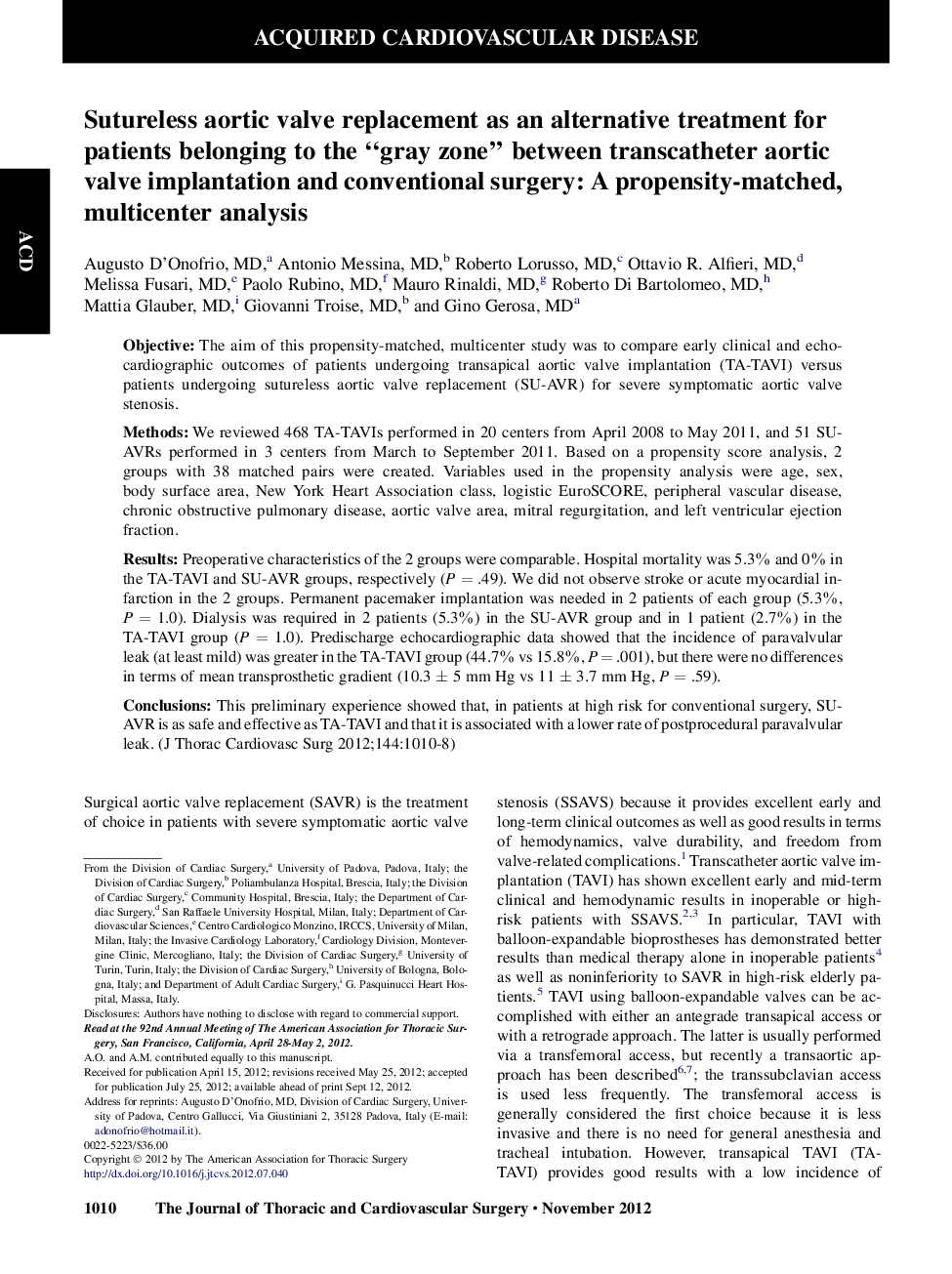| Article ID | Journal | Published Year | Pages | File Type |
|---|---|---|---|---|
| 2981509 | The Journal of Thoracic and Cardiovascular Surgery | 2012 | 9 Pages |
ObjectiveThe aim of this propensity-matched, multicenter study was to compare early clinical and echocardiographic outcomes of patients undergoing transapical aortic valve implantation (TA-TAVI) versus patients undergoing sutureless aortic valve replacement (SU-AVR) for severe symptomatic aortic valve stenosis.MethodsWe reviewed 468 TA-TAVIs performed in 20 centers from April 2008 to May 2011, and 51 SU-AVRs performed in 3 centers from March to September 2011. Based on a propensity score analysis, 2 groups with 38 matched pairs were created. Variables used in the propensity analysis were age, sex, body surface area, New York Heart Association class, logistic EuroSCORE, peripheral vascular disease, chronic obstructive pulmonary disease, aortic valve area, mitral regurgitation, and left ventricular ejection fraction.ResultsPreoperative characteristics of the 2 groups were comparable. Hospital mortality was 5.3% and 0% in the TA-TAVI and SU-AVR groups, respectively (P = .49). We did not observe stroke or acute myocardial infarction in the 2 groups. Permanent pacemaker implantation was needed in 2 patients of each group (5.3%, P = 1.0). Dialysis was required in 2 patients (5.3%) in the SU-AVR group and in 1 patient (2.7%) in the TA-TAVI group (P = 1.0). Predischarge echocardiographic data showed that the incidence of paravalvular leak (at least mild) was greater in the TA-TAVI group (44.7% vs 15.8%, P = .001), but there were no differences in terms of mean transprosthetic gradient (10.3 ± 5 mm Hg vs 11 ± 3.7 mm Hg, P = .59).ConclusionsThis preliminary experience showed that, in patients at high risk for conventional surgery, SU-AVR is as safe and effective as TA-TAVI and that it is associated with a lower rate of postprocedural paravalvular leak.
